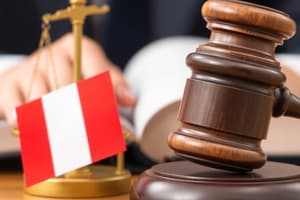Podcast
Questions and Answers
Which of the following best exemplifies Robert Sack's definition of human territoriality?
Which of the following best exemplifies Robert Sack's definition of human territoriality?
- Individuals decorating their homes according to their personal tastes.
- A country establishing free trade agreements with its neighbors.
- A community establishing neighborhood watch programs to reduce crime and increase safety. (correct)
- A nation implementing policies to preserve its cultural heritage.
How might the rise of supranational organizations pose a challenge to the sovereignty of individual states?
How might the rise of supranational organizations pose a challenge to the sovereignty of individual states?
- By promoting free trade and economic cooperation.
- By encouraging cultural exchange and tourism.
- By providing a platform for states to address shared challenges, such as climate change.
- By establishing universal standards of human rights that supersede national laws. (correct)
Which scenario best illustrates the concept of a 'nation-state'?
Which scenario best illustrates the concept of a 'nation-state'?
- A country with a diverse population comprising multiple ethnic groups, each with its own distinct culture and language.
- A country whose borders largely correspond to the area inhabited by a specific ethnic group, sharing a common language, culture, and history. (correct)
- A region within a country that has been granted a high degree of autonomy due to its unique cultural and historical background.
- A country that was formed through the unification of several smaller states, each with its own distinct regional identity and political system.
Which of the following poses the greatest challenge to multinational states?
Which of the following poses the greatest challenge to multinational states?
The division of Korea into North and South Korea exemplifies which concept in political geography?
The division of Korea into North and South Korea exemplifies which concept in political geography?
How do autonomous regions differ from semi-autonomous regions?
How do autonomous regions differ from semi-autonomous regions?
Which type of boundary is most likely to cause conflict between states due to ambiguities in interpretation?
Which type of boundary is most likely to cause conflict between states due to ambiguities in interpretation?
In the context of geopolitical theories, how does the Rimland Theory contrast with the Heartland Theory?
In the context of geopolitical theories, how does the Rimland Theory contrast with the Heartland Theory?
Which of the following is an example of a centripetal force that promotes unity and stability within a state?
Which of the following is an example of a centripetal force that promotes unity and stability within a state?
How does gerrymandering affect electoral geography and political representation?
How does gerrymandering affect electoral geography and political representation?
Flashcards
Territoriality
Territoriality
How people use space to communicate ownership or occupancy of areas and possessions by claiming and defending an area.
Sovereignty
Sovereignty
Complete control a government has over its territory, including legal authority and the right to govern, ensuring independence from external interference.
State
State
A politically organized territory with a permanent population, defined territory, a government, and the capacity to enter into relations with other states.
Nation
Nation
Signup and view all the flashcards
Nation-state
Nation-state
Signup and view all the flashcards
Stateless Nations
Stateless Nations
Signup and view all the flashcards
Multinational States
Multinational States
Signup and view all the flashcards
Geometric Boundaries
Geometric Boundaries
Signup and view all the flashcards
Nationalism
Nationalism
Signup and view all the flashcards
Supranational Organizations
Supranational Organizations
Signup and view all the flashcards
Study Notes
- Political geography explores how humans organize and manage territories on Earth.
- It examines political systems' spatial characteristics, from local to global levels.
Territoriality
- Territoriality involves the use of space to communicate ownership or occupancy.
- It encompasses the act of claiming and defending a specific area.
- Robert Sack defined human territoriality as a strategy to influence actions by asserting control over a geographic area.
- Territoriality can be established through physical markers like fences, symbolic markers like signs, or legal documentation such as deeds.
- Conflicts may arise from territoriality when different groups lay claim to the same area.
Sovereignty
- Sovereignty means a government has complete control over its territory, including legal authority and governance rights.
- It guarantees a government's independence from external interference.
- Sovereignty is a fundamental characteristic of statehood within the modern international system.
- Supranational organizations, internal conflicts, and globalization can challenge sovereignty.
States
- A state needs to be a politically organized territory, have a permanent population, a defined territory, a government, and the ability to engage with other states.
- States are the primary actors in international relations.
- Recognition of a state by other states is often a political decision.
Nations
- A nation is a group sharing cultural ties, ethnicity, language, religion, or historical background.
- Nations may or may not have their own state.
- A nation-state is a state where the territory aligns with a particular ethnicity that has become a nationality.
- Examples of nation-states include Japan, Iceland, and Portugal.
Stateless Nations
- Stateless nations are cultural groups without their own independent political entity.
- Examples include Kurds, Palestinians, and Basques.
- These nations often pursue self-determination.
Multinational States
- Multinational states contain multiple nations within a single state.
- Examples include Russia and Canada.
- Managing relations among different national groups presents challenges for these states.
Multistate Nations
- Multistate nations are those whose territory spans multiple state borders.
- Examples include Koreans (North and South Korea) and Germans (Germany, Austria, Switzerland).
- These nations may pursue unification or closer cooperation across borders.
Autonomous Regions
- Autonomous regions possess a degree of self-government within a state.
- The level of autonomy can vary significantly.
- Examples include Native American reservations in the United States and Åland Islands in Finland.
- Autonomy is often granted to protect cultural or linguistic distinctiveness.
Semi-Autonomous Regions
- Semi-autonomous regions have a moderate degree of self-government.
- They typically have some control over local affairs but are still subject to the laws and authority of the central government.
- Examples include Catalonia in Spain and Zanzibar in Tanzania.
Boundaries
- Boundaries define the territorial limits of a state.
- They can be physical (rivers, mountains) or cultural (language, religion).
- Geometric boundaries are based on straight lines or coordinates.
- Boundaries can be sources of conflict.
Types of Boundaries
- Physical boundaries are natural features separating political entities.
- Cultural boundaries separate groups based on cultural traits.
- Geometric boundaries are defined by straight lines or arcs, irrespective of physical or cultural features.
- Antecedent boundaries are established before an area is populated.
- Subsequent boundaries evolve with the cultural landscape.
- Superimposed boundaries are forced upon existing cultural landscapes by colonizers or conquerors.
- Relict boundaries no longer function as borders but still impact the landscape.
Boundary Disputes
- Definitional boundary disputes focus on the legal interpretation of boundary agreements.
- Locational boundary disputes arise when the actual demarcation of a boundary is contested.
- Operational boundary disputes involve disagreements over how a boundary should function.
- Allocational boundary disputes concern the rights to natural resources located along or near a boundary.
Geopolitical Theories
- Geopolitics studies the effects of geography on politics and international relations.
- Heartland Theory, proposed by Halford Mackinder, suggests that control of Eurasia (the "Heartland") is key to world domination.
- Rimland Theory, proposed by Nicholas Spykman, argues that control of the coastal areas (the "Rimland") of Eurasia is more crucial.
Nationalism
- Nationalism is a feeling of loyalty to and pride in one's nation or ethnic group.
- It can be a unifying or divisive force.
- Centripetal forces promote unity and stability within a state.
- Centrifugal forces disrupt internal order and destabilize a state.
Unifying Forces (Centripetal)
- Nationalism fosters shared identity and loyalty.
- A strong national identity promotes unity.
- Effective leadership can unite diverse groups.
- A common culture reduces internal divisions.
- A stable economy reduces discontent.
- A shared infrastructure (transportation, communication) promotes integration.
- A unifying external threat strengthens cohesion.
Dividing Forces (Centrifugal)
- Regionalism can undermine national unity.
- A weak economy breeds discontent.
- Internal conflict disrupts stability.
- Ethnic or cultural diversity can lead to division.
- Political instability weakens central authority.
- Unequal development fosters resentment.
Forms of Governance
- Unitary states concentrate power in a central government.
- Federal states distribute power between a central government and regional governments.
- Confederal states have weak central authority with power residing in regional entities.
Electoral Geography
- Electoral geography studies how spatial patterns influence voting behavior and election outcomes.
- Gerrymandering involves drawing electoral district boundaries to favor a particular party or group.
- Majority-minority districts are created to give minority groups a better chance of electing representatives.
Geopolitical Conflicts
- Geopolitical conflicts arise from competition for territory, resources, influence, or power.
- These conflicts can occur at various scales, from local to global.
- They often involve multiple actors with conflicting interests.
Types of Geopolitical Conflicts
- Ethnic conflicts stem from tensions between different ethnic groups.
- Religious conflicts arise from disputes between different religious groups.
- Territorial disputes involve disagreements over land ownership.
- Resource conflicts occur over access to valuable resources.
- Ideological conflicts stem from clashes of political or economic systems.
Terrorism
- Terrorism involves the use of violence against civilians to achieve political goals.
- It is often used by non-state actors to challenge state authority.
- Terrorism can be domestic or international.
- Counterterrorism efforts aim to prevent and respond to terrorist attacks.
Supranational Organizations
- Supranational organizations involve multiple states working together for common purposes.
- These organizations can be global, regional, economic, or political.
- Member states pool sovereignty to achieve shared goals.
Examples of Supranational Organizations
- The United Nations (UN) promotes international cooperation and peace.
- The European Union (EU) promotes economic and political integration in Europe.
- The North Atlantic Treaty Organization (NATO) is a military alliance for collective defense.
- The World Trade Organization (WTO) promotes free trade.
- The Association of Southeast Asian Nations (ASEAN) promotes economic and political cooperation in Southeast Asia.
- The African Union (AU) promotes unity and development in Africa.
Devolution
- Devolution is the transfer of power from a central government to regional or local governments.
- It can be a response to centrifugal forces.
- Devolution can lead to greater autonomy or even independence.
- Examples include the creation of regional parliaments in the United Kingdom and the breakup of the Soviet Union and Yugoslavia.
Effects of Devolution
- Increased regional autonomy helps accommodate regional differences.
- Separatist movements can lead to the creation of new states.
- Political instability may increase during the devolution process.
- Economic disparities can widen if some regions are better equipped to manage their affairs than others.
Studying That Suits You
Use AI to generate personalized quizzes and flashcards to suit your learning preferences.





